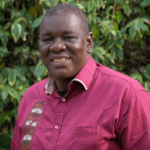Where gene drive fits into WHO’s new Global Malaria Programme operational strategy

On the 23rd of April 2024, WHO published an updated operational strategy for its Global Malaria Programme for the years 2024-2030. The Global Malaria Programme was initially guided by a strategy intended to cover the years 2016-2030, which served as a framework and guide for efforts to reduce the global malaria incidence and mortality rates by at least 90% within that period. Since then, a stall in progress has indicated that a different, more intensive approach needs to be taken.
WHO’s updated operational strategy, notes that ‘In 2022, there were an estimated 249 million new cases of malaria worldwide, compared to 231 million in 2015.’, indicating that current efforts towards malaria elimination are not effective enough, and that the current framework, which was last revised in 2021, required for a new update.
The updated strategy relies on four strategic functional objectives:
- Drawing up norms and standards;
- Accelerate the development of new tools and innovations;
- Promote the use of strategic information for impact;
- Provide technical leadership of the global response.
As well as a fifth cross-cutting pillar, ‘context-based country support’, which complements the objectives. The strategy highlights the potential of genetically modified mosquitos as one of many innovative new tools, which embodies these objectives, and which – in combination with other methods – could invigorate us towards the 2030 targets.
One of the root causes of the stall in progress is the growing resistance that the malaria parasite and mosquito vector are developing towards antimalarial drugs and insecticides . This beckons the development of new innovative tools to reduce malaria transmission, and the strategy draws from the Tanahashi framework, highlighting the importance of considering ‘availability, accessibility and acceptability’ in endemic interventions and how these facets are linked to socio-economic and environmental factors.
Acknowledging that ‘the WHO African Region bears the heaviest burden of the disease, and young children and pregnant women living in poverty are particularly vulnerable’, issues of accessibility must be addressed in the global response to the endemic. The strategy states that ‘malaria is intimately connected to poverty’ as the most impoverished members or society are ‘more likely to be infected, [but] less likely to receive quality care’ due to financial barriers as well as the difficulty of reaching rural and remote communities. The benefit of using genetically modified mosquitoes is that beneficiaries are not required to travel or provide funds to facilitate access; the mosquitoes themselves spread and essentially do the work for us without the need for practitioners to get direct access to hard-to-reach areas.
In addition to this, the matter of acceptability and garnering community support and trust are both determinants of how broadly a solution can be administered and an ethical necessity. The strategy is underpinned by principles of ‘country ownership and leadership’ as well as ‘equity in access to quality health services; and the integration of data and science into decisions, recommendations and action plans’. Gene drive technology is being researched by country-led teams across Africa, with a community-based approach that encourages co-development with local stakeholders. This Africa-centred approach fosters the acceptance of the technology.
Now more than ever, it is clear that new methods of combatting malaria are needed, and in light of WHO’s renewed call to action, I hope that the implementation of these new solutions enables us to achieve our goals by 2030.
